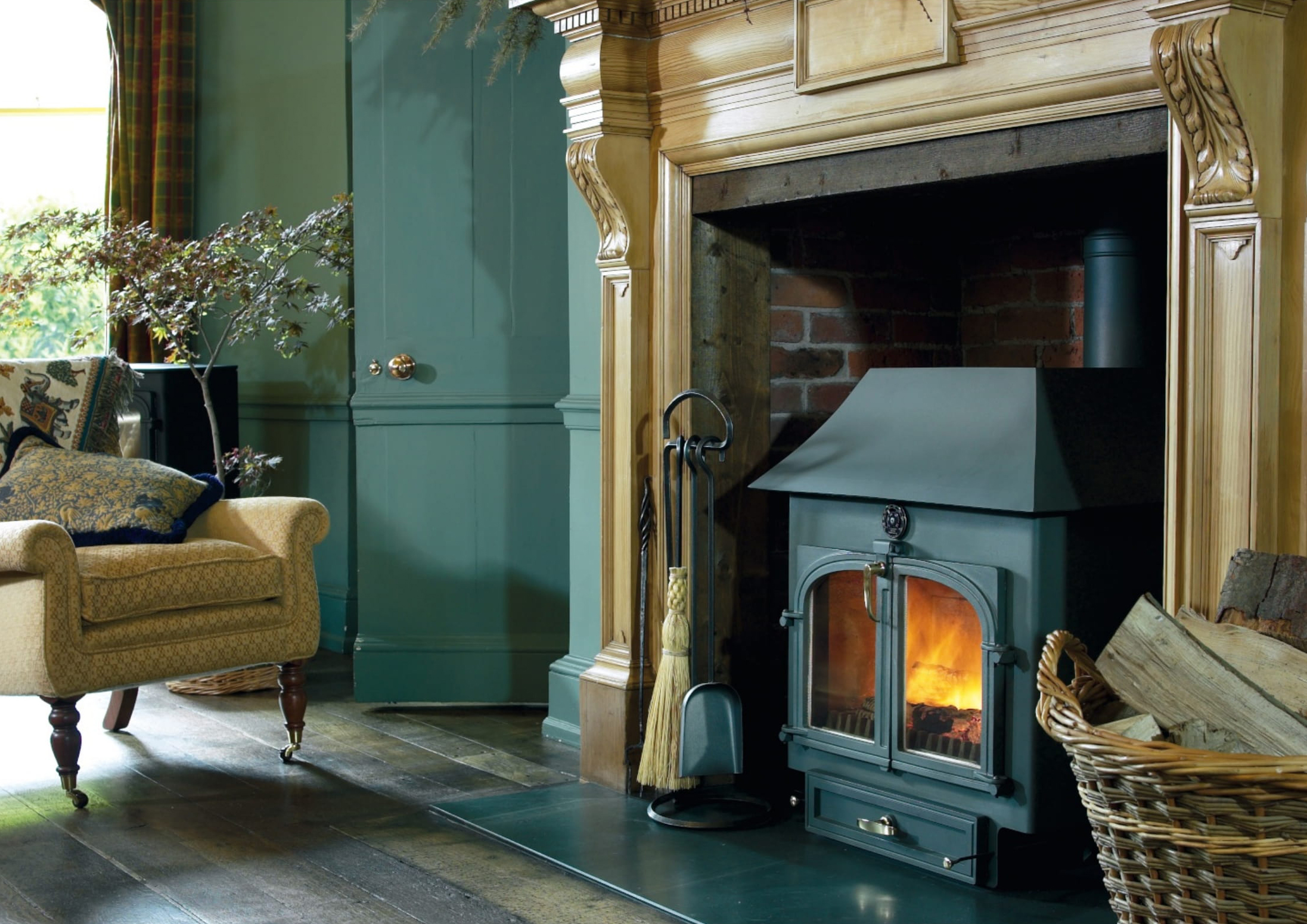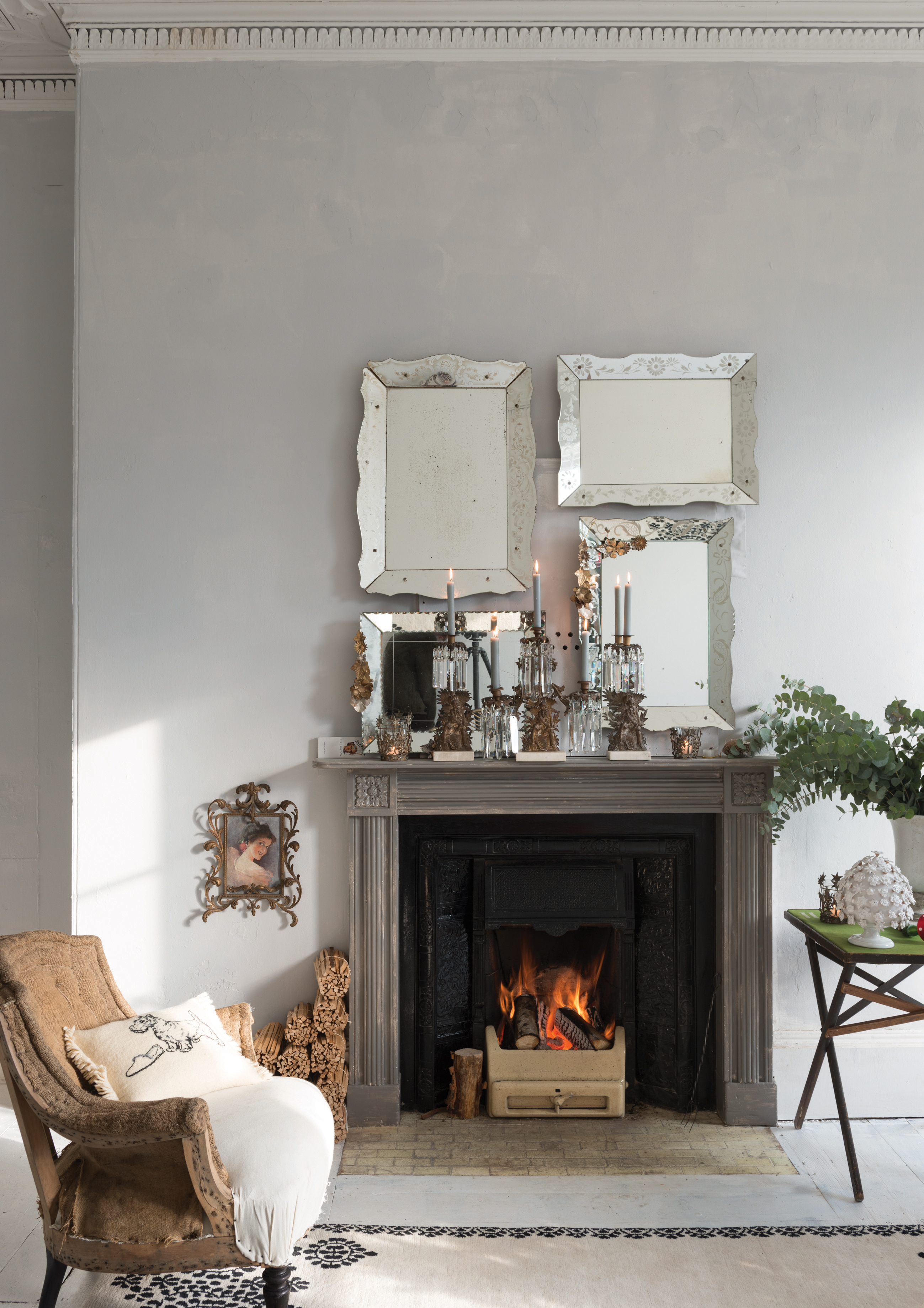How to open up a fireplace
Want to know how to open up a fireplace? If, like many renovators, you've been lucky enough to uncover an original fireplace in the process of working on your home, you'll need our tops tips to reopen it successfully

Looking for advice on how to open up a fireplace, successfully? One of the joys of renovating is discovering original features, such finding a hidden fireplace, which can then be reopened. It is often the case in older properties that fireplaces, which were once the main source of heating, were sealed or covered over at some chapter in the property’s ownership.
After the advent of central heating in the late 1950s, many people blocked up their original fireplaces to make way for modern gas or electric fires, but fireplaces are now regaining their status as a desirable focal point.
Here's how to reopen a hidden fireplace. For all other things fireplaces, check out our dedicated hub page. Find out how to renovate a house from scratch, too.
How to spot the signs of a concealed fireplace
In most cases it will be obvious whether or not there was once a fireplace in your house: in properties dating pre-1939 there will be a chimneybreast with alcoves to the side.
If you run your hand along the face of the chimneybreast, you may be able to feel a line from the lintel or fireplace opening. Knock the wall, and you will hear a difference in sound between the solid wall and covered section.
Is it always safe to open up a fireplace?
More from Period Living

Period Living magazine is the perfect source of inspiration for anyone who owns an older property, or just loves characterful style. Check out the latest subscription offers.
Before you get to work opening it up, however, it is wise to consult a surveyor to ensure it will not cause any structural damage. If the wall has been completely rebuilt, you will need to call in a builder, and likewise if there is no lintel in place or the existing lintel is cracked, as the wall could collapse if you try to knock it through yourself.
If you believe the chimney has been removed, look in the loft for either a flue or signs – chopped-off bricks or a sooty strip – that one was once there. The flue and chimney must be reinstated if you intend to have a fully working fire.
Get small space home decor ideas, celeb inspiration, DIY tips and more, straight to your inbox!
Find out how to repair a chimney in our guide.

How to open up a fireplace
1. Protect surrounding floors and furniture
Before you set about reinstating the opening, you should first protect your floors and cover furniture. While it may be tempting, for some, to skip this step, it'll be worth the few minutes of effort in the long run.
2. Find the 'builder's opening'
In order to uncover and unblock the fireplace, you should first find the ‘builder’s opening’. This is the rectangular recess in the chimney breast into which the fireback is fitted, which can be quite large in pre-Georgian houses but gradually reduced in size to no more than three square-feet in modest Victorian houses, and smaller still thereafter.
To find this opening, remove the airbrick or ventilation vent, or take out two bricks about 30cm above the floor. Hold a lit taper in front of the opening — a flame drawn towards it indicates a clear chimney, while a still flame is a sign that the chimney is in some way obstructed.
3. Check to see if the hearth is still in place
You can also check to see if the hearth is still in place by lifting the floor covering. The hearth is usually a concrete slab, about 12cm deep, which extends beneath the fire and out into the room. If it is missing, it will need to be rebuilt.
4. Carefully remove the plaster
Start by carefully chopping off the plaster from the assumed centre of the fireplace, working outwards, and the outline of the opening will become apparent. It should be spanned by a lintel, which must be left in place.
Starting one course down from the underside of the lintel, remove a full course of masonry the width of the opening. This should then reveal a space with a fireback where the fire once burned. If the fireback is in good condition, it can be left in situ. Minor cracks in the fireback can be repaired with fire cement, although more extensive damage will need specialist attention.
Once the outline of the structural opening, together with its lintel or arch, is visible, all the masonry within the outline can be removed, leaving a square opening to take the fire or stove of your choice.

5. Make the following checks before reinstating the fireplace
Before you can begin using the fireplace there are a few essential checks to undertake. These include:
- Damaged arches or lintels will need repairing and the chimney must be sound and clear of any obstructions.
- Any flue or chimney capping should also be removed.
- Before installing a new appliance, bring in a chimney sweep to clean and inspect the flue.
- Have the condition of the lining checked and a smoke test carried out.
6. Check for brickwork damaged by tars and salts
With chimneys in old houses, many years of burning coal will have resulted in tars and salts being absorbed into the brickwork, and if the redundant flue becomes damp, these may soak through into the plasterwork.
Some form of false wall or dry-lining may therefore need to be applied to the face of the chimney breast to prevent these showing through.
